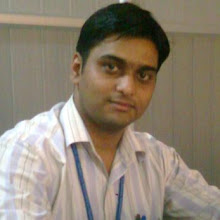In partnership with the University of California–Irvine in the US,
the Indian Institute of Technology, Kharagpur (IIT-Kgp), has developed a
rapid diagnostic test (RDT) device that will bring down to Rs. 20 the cost of blood tests to detect diseases such as malaria, dengue and tuberculosis.
Though
not considered a gold standard by doctors, RDT devices generate
immediate results and do not need skilled operators. They are popular in
areas where healthcare facilities are limited.
Going forward, the
one developed at Kharagpur could be adapted to conduct more complex
tests to detect even HIV (human immunodeficiency virus), said
researchers at the institute.
The device has delivered 100%
accurate results at laboratories in the institute, said Suman
Chakraborty, professor at IIT-Kgp’s mechanical engineering department,
who is leading the research.
Clinical trials are to be begin
within a month in partnership with JSV Innovations Pvt. Ltd, a firm
co-promoted by Dr Satadal Saha—a Kolkata-based general surgeon.
Codenamed
“Laboratory on CD”, Chakraborty started his research on this RDT device
in 2005 in “active collaboration” with prof. Marc Madou’s BioMEMS
(biological micro-electrical mechanical systems) laboratory at
University of California–Irvine.
The BioMEMS laboratory’s website
says it “applies miniaturization science to solve chemical and
biological problems with an emphasis on molecular biology and energy”.
It is partnering at least three IITs in research—Kanpur, Kharagpur and
Hyderabad.
The Indo-US Science and Technology Forum, an autonomous
society founded in March 2000 jointly by the US and Indian governments
also facilitated the research, according to Chakraborty.
He and
his team have developed a microfluidic compact disc (CD), which when
rotated with a simple motor, delivers blood samples into separate
chambers filled with different reagents through microchannels embedded
in the CD. Results are derived from the sample’s reaction with the
reagents.
Besides trained technicians, conventional tests require
more reagents than this RDT device, making them more expensive,
according to Chakraborty.
“This device could be a game changer
considering the condition of healthcare facilities in India,” said JSV
Innovations’s Saha, who along with two other doctors have built three
hospitals in West Bengal targeted at people in rural and semi-urban
areas. “Many people die in remote villages because of delay in detecting
killer diseases. This device, being portable and easy to operate, could
do wonders,” Saha added. To be sure, there are at least 20 RDTs
available across the world to detect malaria, according to a 2008 World
Health Organization estimate. RDT devices are available for dengue and
tuberculosis as well.
Over the next few months, clinical trials of
IIT-Kgp’s RDT device will be conducted with excess samples drawn from
medical camps in Kolkata and West Midnapore district, according to Saha.
On
conclusion of the clinical trials, IIT-Kgp, Madou’s BioMEMS laboratory
and JSV Innovations will jointly seek patents for the device, according
to Chakraborty.
Saha, who is likely to have a key role in
commercial exploitation of the device, said he is opposed to the
involvement of a large pharmaceutical firm in distributing it. Such an
arrangement could undermine the key objective of the research, which is
affordability, according to him.










